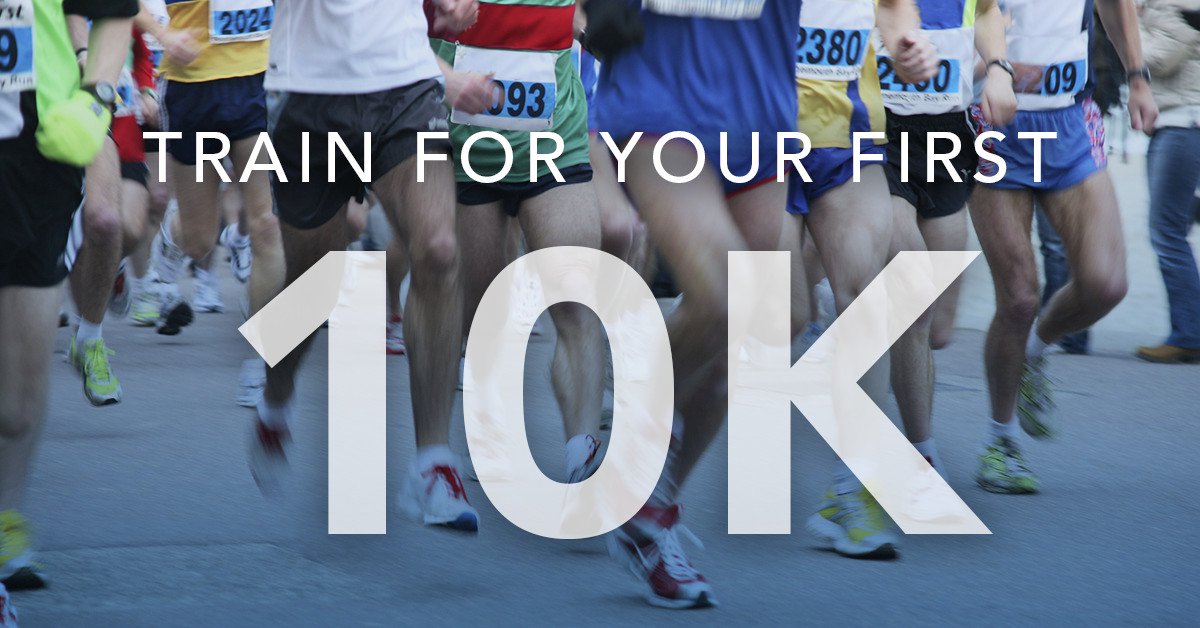
Training Plan For Your First 10K
The 10K distance is the perfect race for those who want to run a little farther than their usual 2-3 miler, build their running endurance and push their limits beyond a 5K.Start from where you are.
In this post you’ll find a training plan that is geared to those wanting to run their first 10K, and who’ve been running at least 30-40 minutes, three times per week for 2-3 months. If you’ve been running less, or you’re just getting started, it’s wise to invest time in building your running up to this level before you begin this program.Download the plan and make it yours.
When you download the First 10K Training Program, you’ll find a gradually progressing 10-week plan that includes three runs per week, two cross-training days and two rest days. The runs are a mix of indoor and outdoor runs and the cross-training days can be spent on an elliptical, an exercise bike, or doing the workout of your choice. The first step is to make it yours. Feel free to move the workouts to match your life schedule. The only rule to follow is you want to have at least one day in between each run, so if you run on Mondays, run again on Wednesday and so on.
Print off the plan and keep it with a log of your mileage, your times, and how you feel after every run.
Download the training plan here.
The first step is to make it yours. Feel free to move the workouts to match your life schedule. The only rule to follow is you want to have at least one day in between each run, so if you run on Mondays, run again on Wednesday and so on.
Print off the plan and keep it with a log of your mileage, your times, and how you feel after every run.
Download the training plan here.
The Zones.
The three training zones, yellow, orange and red, are a way to specify the intended intensity of the workout. The training plan includes mostly yellow and a little orange zone workouts to build endurance, speed and assure recovery along the way.
Guide to the workouts in the training plan:
Warm ups.
Warm up by walking for 5 minutes before every running workout. Start easy and build to a brisk and close to running pace by the end. This gradually increases heart rate, breathing rate and circulation to the working muscles.Cool downs.
Cool down by walking 5 minutes after every run, starting at a brisk pace and slowing towards the end. This gradually brings your body back to its resting state.Long Runs.
The longer runs on the weekends gradually build to six miles to prepare you to run the 10K distance.Easy (Yellow Zone) Runs.
The shorter, easy yellow zone runs bridge the gap between your long runs, build your aerobic fitness and aid in allowing your body to recover from the demands of the faster and longer runs.Cross-training.
Mix up your program on the cross-training days and include lower impact activities like cycling, elliptical, yoga, and strength training. A good example would be to perform the elliptical machine for 20-30 minutes at an orange zone effort followed by a total body strength program or class.Rest Days.
These are your off days from training and activity. They aid in passive recovery from the demands of the progressive training plan and are just as important as the workouts.Speed Workouts.
- Warm up walking for 5 minutes, starting easy and build to a brisk pace by the end.
- Run 5 minutes in your easy yellow zone effort.
- Repeat 8 times:
- Run 1 minute at your Orange Zone Effort (just outside your comfort zone).
- Follow with 2 minutes of very easy jogging or walking to catch your breath.
- Cool down walking for 5 minutes, starting at a brisk pace and slowing by the end.
Speed-Hill Workouts.
- Warm up walking for 5 minutes, starting easy and build to a brisk pace by the end.
- Run 5 minutes in your easy yellow zone effort.
- Repeat 4 times:
- Fast 1 minute: Run one minute at your Orange Zone Effort (just outside your comfort zone).
- Slow 2 minutes: Follow with 2 minutes of very easy jogging or walking to catch your breath.
- Hill 1 minute: Increase the treadmill incline to 3% and run at your Orange Effort Zone.
- Slow and flat 2 minutes: Lower incline to 0% and run 2 minutes at a very easy jogging effort to catch your breath.
- Cool down walking for 5 minutes, starting at a brisk pace and slowing by the end.
Image
Coach Jenny Hadfield is a published author, writer, coach, public speaker and endurance athlete. To find out more, visit our Meet Our Writers page or visit Coach Jenny’s website.
